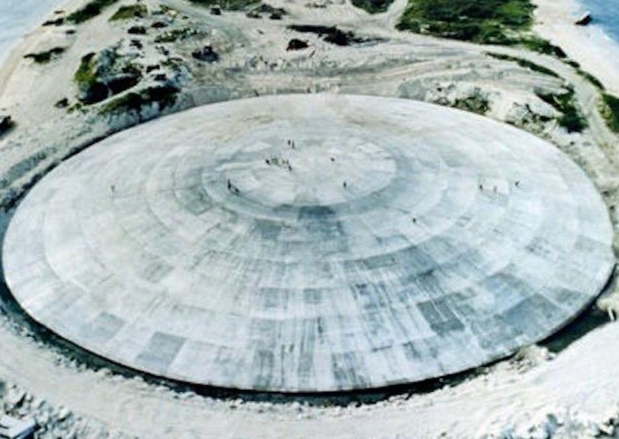
U.S. DEPARTMENT OF ENERGY
In May, there were reports that a “nuclear coffin” in the Marshall Islands is ready to crack open and leak radioactive fallout into the Pacific Ocean. Now there is an equally alarming report that
Researchers at Columbia University released a new report this week titled “Background gamma radiation and soil activity measurements in the northern Marshall Islands,” which was published in the journal PNAS. The researchers tested soil samples on nine islands in four atolls in the northern Marshall Islands.
The areas involved in the study include Enjebi, Ikuren, and Japtan in Enewetak Atoll; Bikini and Enyu in Bikini Atoll; Naen in Rongelap Atoll; and Aon, Elluk, and Utirik in Utirik Atoll. All of these places in the Pacific Ocean were affected by the U.S. nuclear testing program between the years of 1946 to 1958.
The U.S. government conducted 67 nuclear weapon tests in the Marshall Islands including 23 on Bikini Atoll. In 1954, the United States military detonated the Bravo hydrogen bomb, which is approximately 1,000 times more powerful than the atomic bomb that obliterated Hiroshima, Japan. The high-yield thermonuclear weapon was the most powerful nuclear device ever detonated by the U.S. and left a crater that had a massive diameter of 1.2 miles. Rongelap and Utirik were affected by the Bravo detonation.
Because of the constant bombardment of nuclear warheads from decades ago, these places in the Marshall Islands still have high concentrations of nuclear isotopes. The Marshall Islands areas tested had “significantly” higher levels of radiation compared to nuclear disasters Chernobyl and Fukushima. In some areas of the Marshall Islands, the radiation is ten to 1,000 higher than the radioactive areas near the Chernobyl powerplant that exploded in 1986.
The researchers found high concentrations of americium-241, cesium-137, plutonium-238, and plutonium-239,240 in the test areas.
RELATED: What ‘Chernobyl’ Got Wrong – 21 Things That Didn’t Happen In Real-Life
“All of these measurements are important due to the potential for repopulation of at least some of the atolls in the Marshall Islands,” said Dr. David Krofcheck, of the physics department at the University of Auckland.
“Such measurements of the effects of nuclear weapons testing in the Marshall Islands must continue on a regular basis into the indefinite future,” Dr. Krofcheck explained.
The researchers discovered that the external gamma radiation was “well above” the legal exposure limit established in agreements between the U.S. and the Republic of the Marshall Islands. The United States left the Marshall Islands in 1986 and paid a “full settlement of all claims, past, present and future” in reference to the U.S. Nuclear Testing Program.
In 1977, the U.S. attempted to clean up the radioactive fallout in the area. U.S. government employees gathered an estimated 2,577,970 cubic feet of radioactive soil from the Marshall Islands and put it in a 328-foot crater that was left from a May 1958 test on the Enewetak Atoll on Runit Island.
In 2013, the U.S. Department of Energy released a report about the radioactive Runit Dome. The report acknowledged that the area was contaminated with radiation and that there was so much radioactive material in the area that further attempted cleanup efforts would be fruitless and the best remedy would be for the Pacific Ocean to dilute the nuclear waste.
The Nuclear Claims Tribunal estimates that the U.S. nuclear tests in the Marshall Islands caused $244 million in damages.
[NYP]